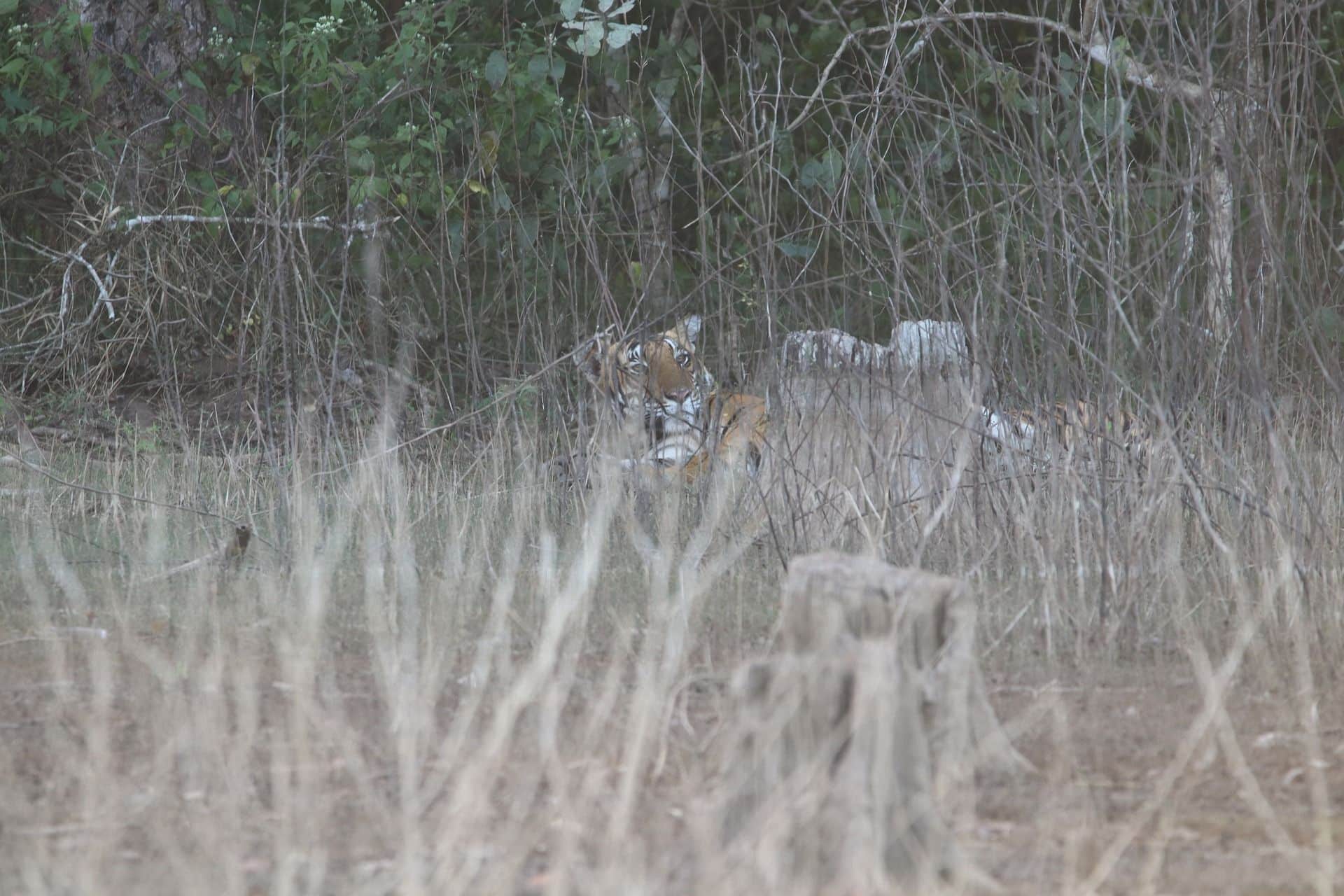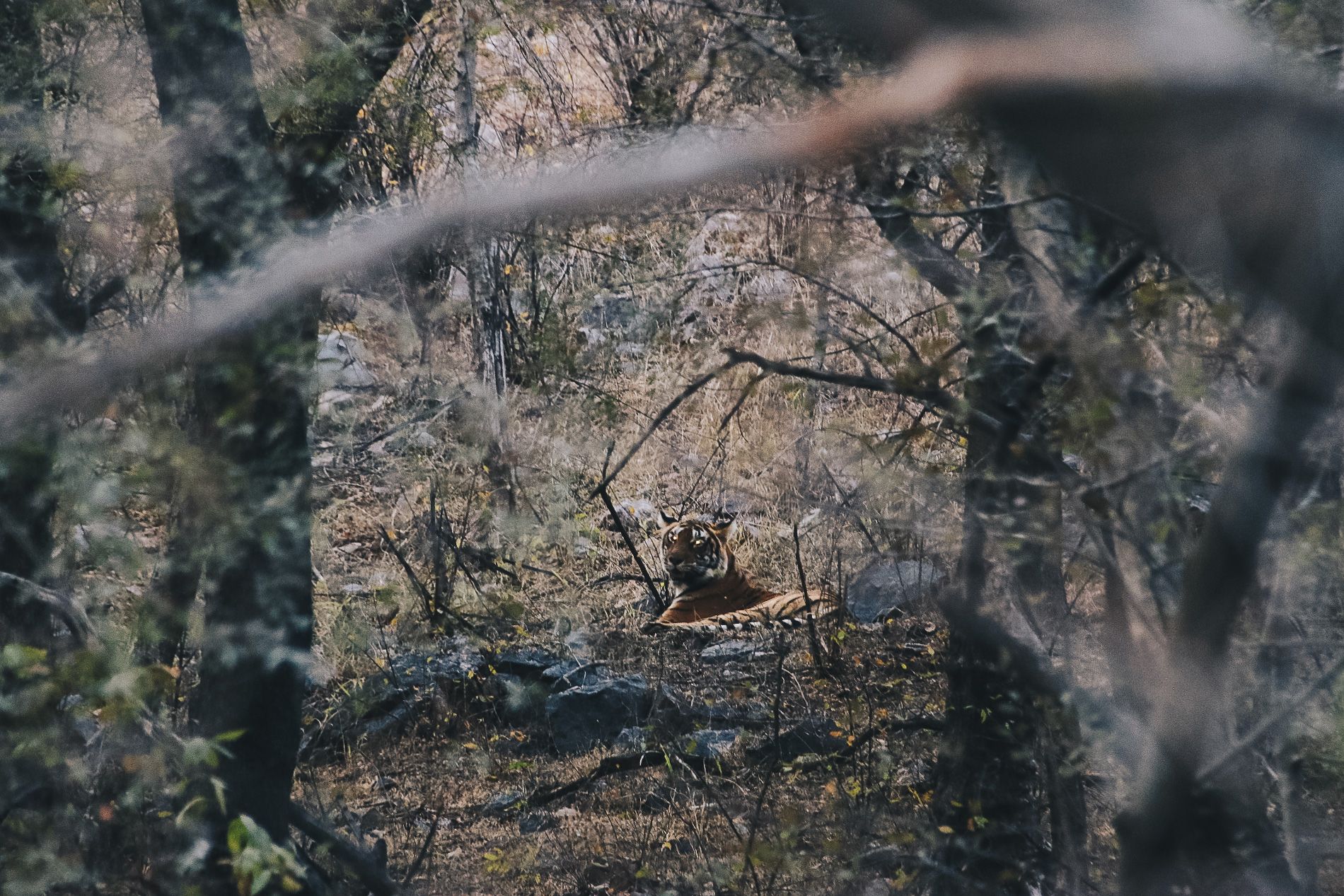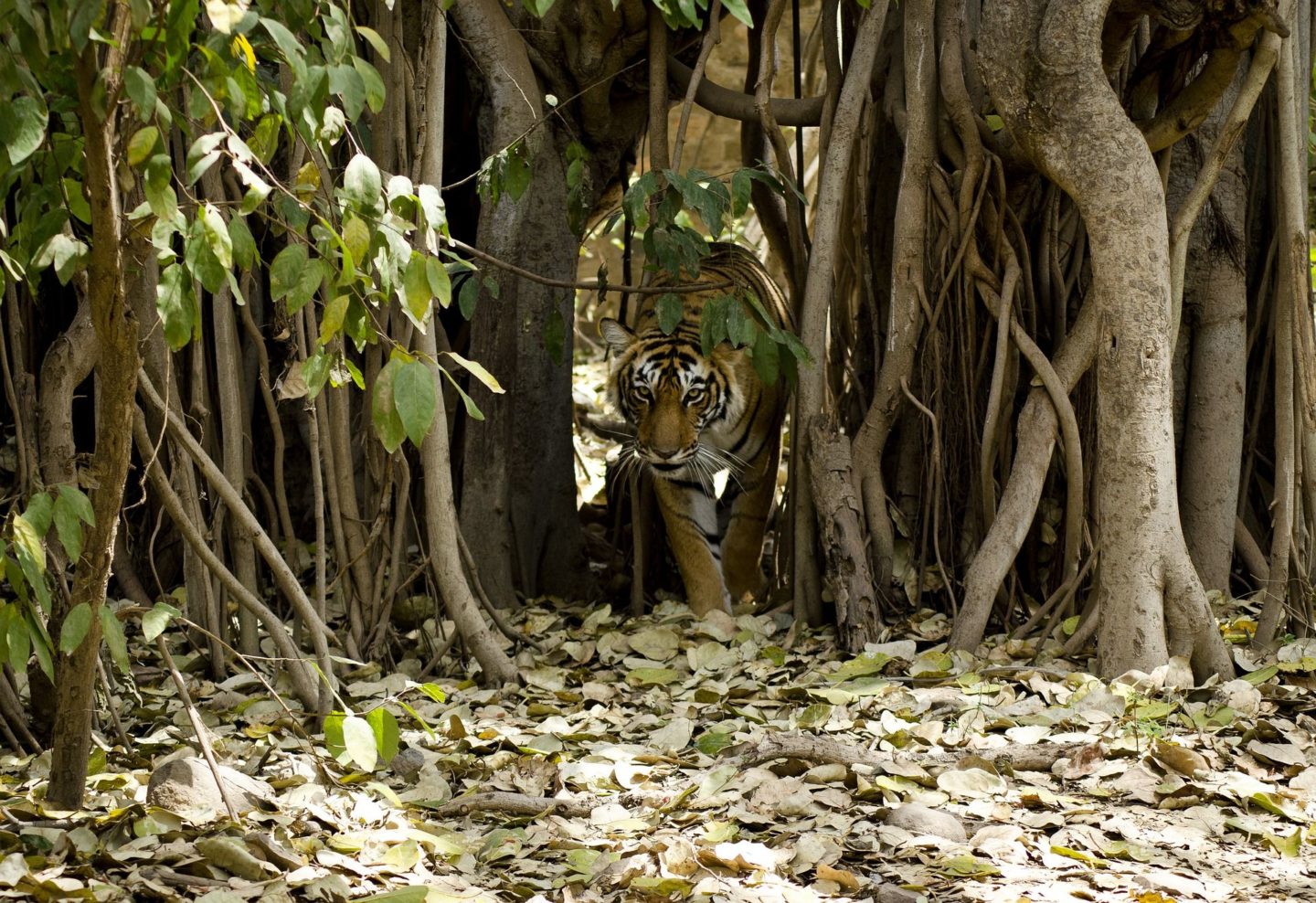
Where to see tigers in India? We take you to Ranthambhore in India, to one of the five natural parks to try and catch a glimpse of this wonderful animal.
Ranthambhore National Park is located next to the town of Sawai Madhopur in Rajasthan and around 120 km southeast of Jaipur. This park is famous for its 4X4 observation of the Bengal tiger in its natural habitat.
I invite you to read all our other articles on Rajasthan to help you prepare for your trip:
- Our 19-day Rajasthan tour
- Where to celebrate the Holi Festival in India?
- What to bring back as souvenirs from Rajasthan
- Our tips for preparing your trip to India
- Taste a goat’s massala at a local restaurant
- Our opinion and impressions of Rajasthan
There are no more than 6,000 wild tigers left in the world, half of them in India. The tiger is a powerful, majestic, fierce animal that has marked out its territory in India and even appropriated it at the expense of the lions it has succeeded in eradicating over time. But today, it’s on the verge of extinction. It was hunted for many years because its ferocity led it to attack villages. The time has come to preserve it!
There are several reserves in the country where you can observe it. We’re counting:
- Kanha reserve
The 940 km2 Kanha National Park, part of the state of Madhya Pradesh, was recently named Tiger State of India. It’s a well-managed wilderness reserve, with unspoilt nature and home to the Royal Bengal tiger. There are also leopards, hyenas, monkeys, bears, pond deer, Indian bison… The park is said to be one of the most spectacular and well-maintained in Asia.
- Bandhavgarh reserve
Bandhavgarh National Park covers an area of 105 km2 and is located in the Vindhya mountain range in Madhya Pradesh. This reserve is not only famous, but also the most visited, as its tiger density is said to be the highest in the country, with an estimated 8 tigers per km2. One of India’s most beautiful parks, the landscape is a little different from Kanha, as it is made up of tropical forests, steep rocky mountains, hills and valleys. The large meadows are ideal for wildlife observation, and inside the park are the remains of a 2,000-year-old fort.
- Ranthambore Reserve
Ranthambore National Park is located 200 km southwest of Delhi. In the past, this park was the royal hunting ground of the Maharajas of Jaipur. The reserve offers beautiful landscapes, with large arid expanses but also lakes and cliffs, which is why it is reputed to be one of the best places to observe wildlife. Other species include sambars (deer), hinds, langur monkeys, bears and wild boar, as well as around 320 species of birds and over 35 species of reptiles. Ranthambore is also famous for its fortress, which offers superb views over the park. It is the second largest fort in Rajasthan after Chittorgarh. Ranthambore National Park is closed in summer (July to September), when it is very hot.
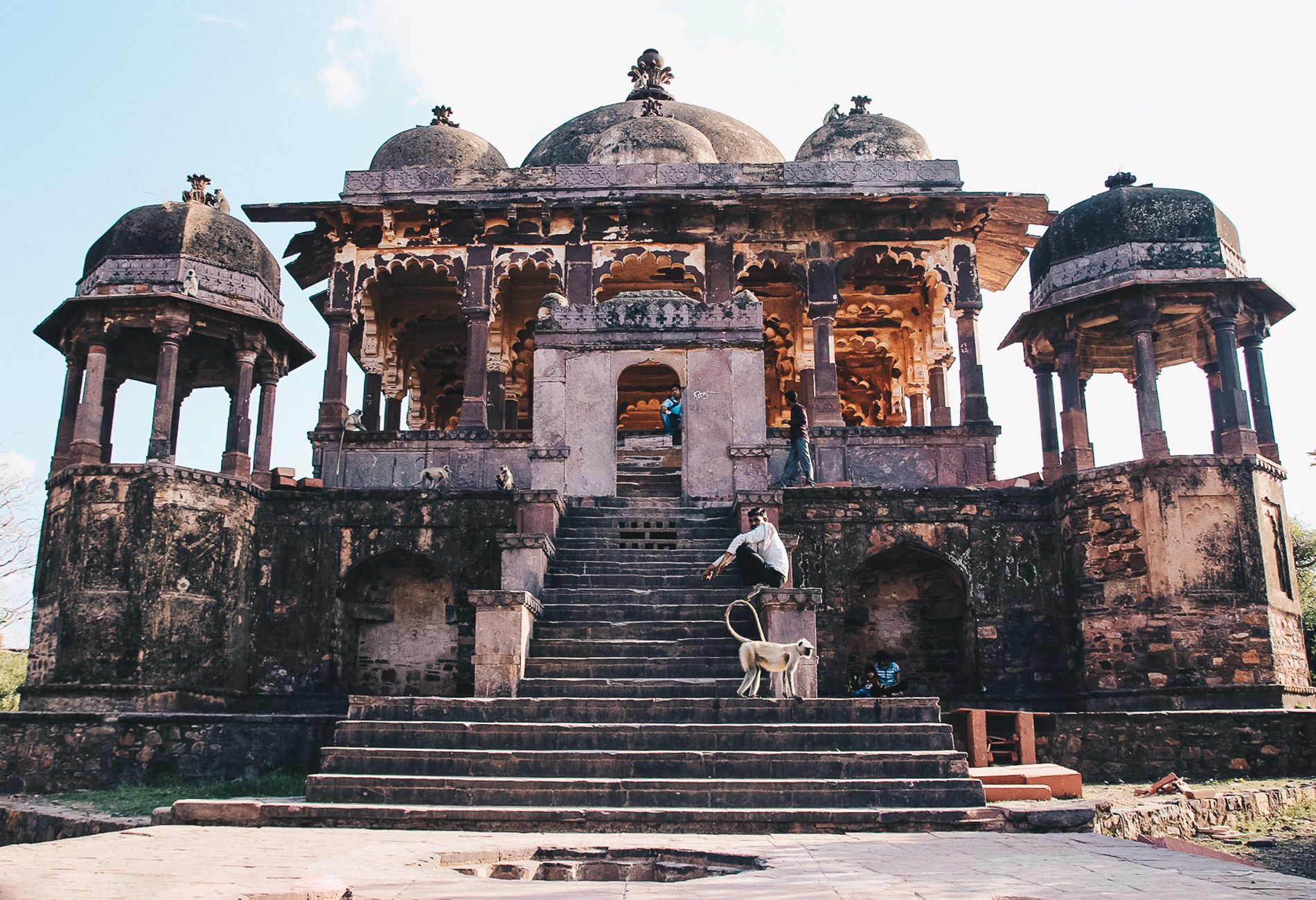
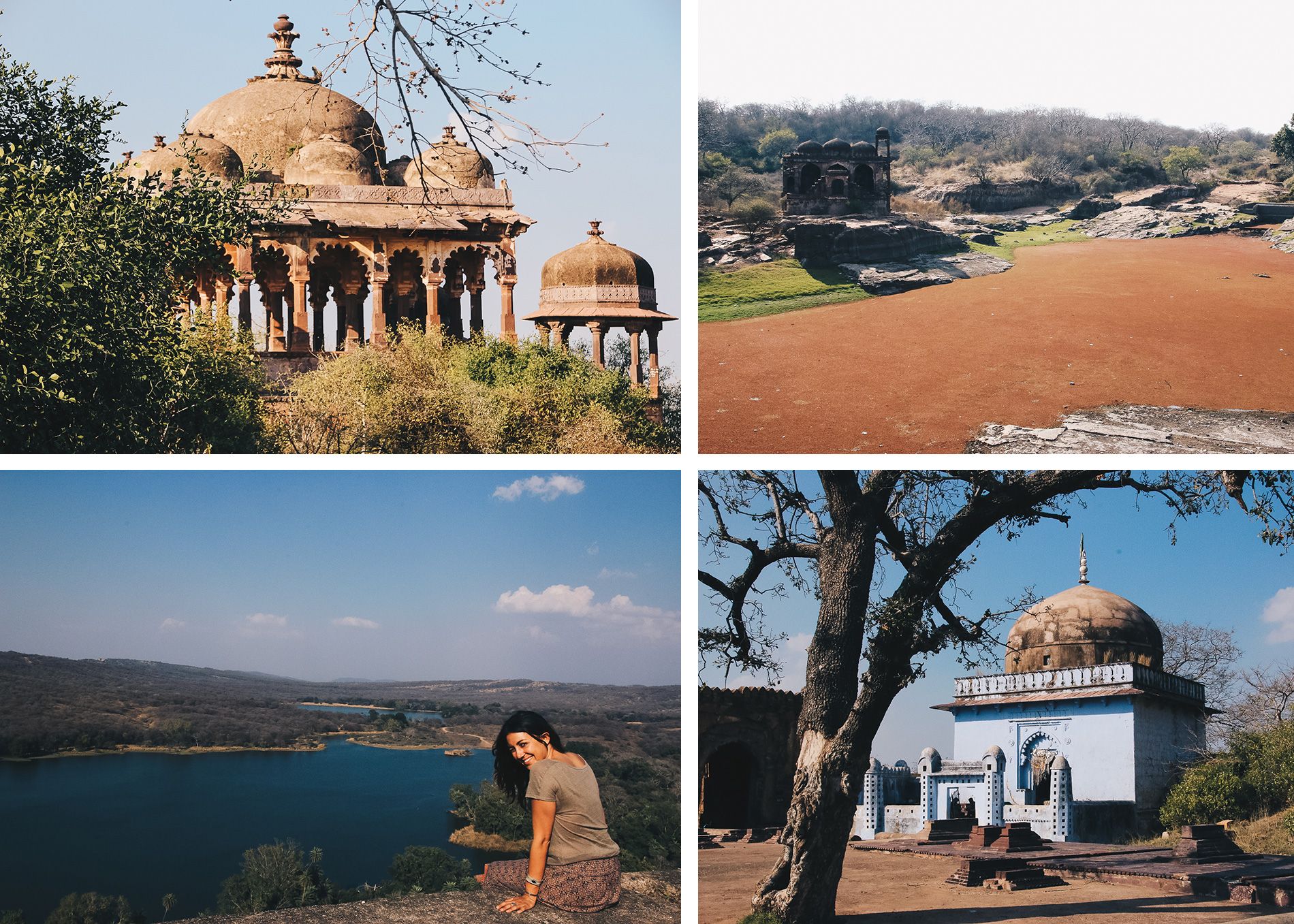
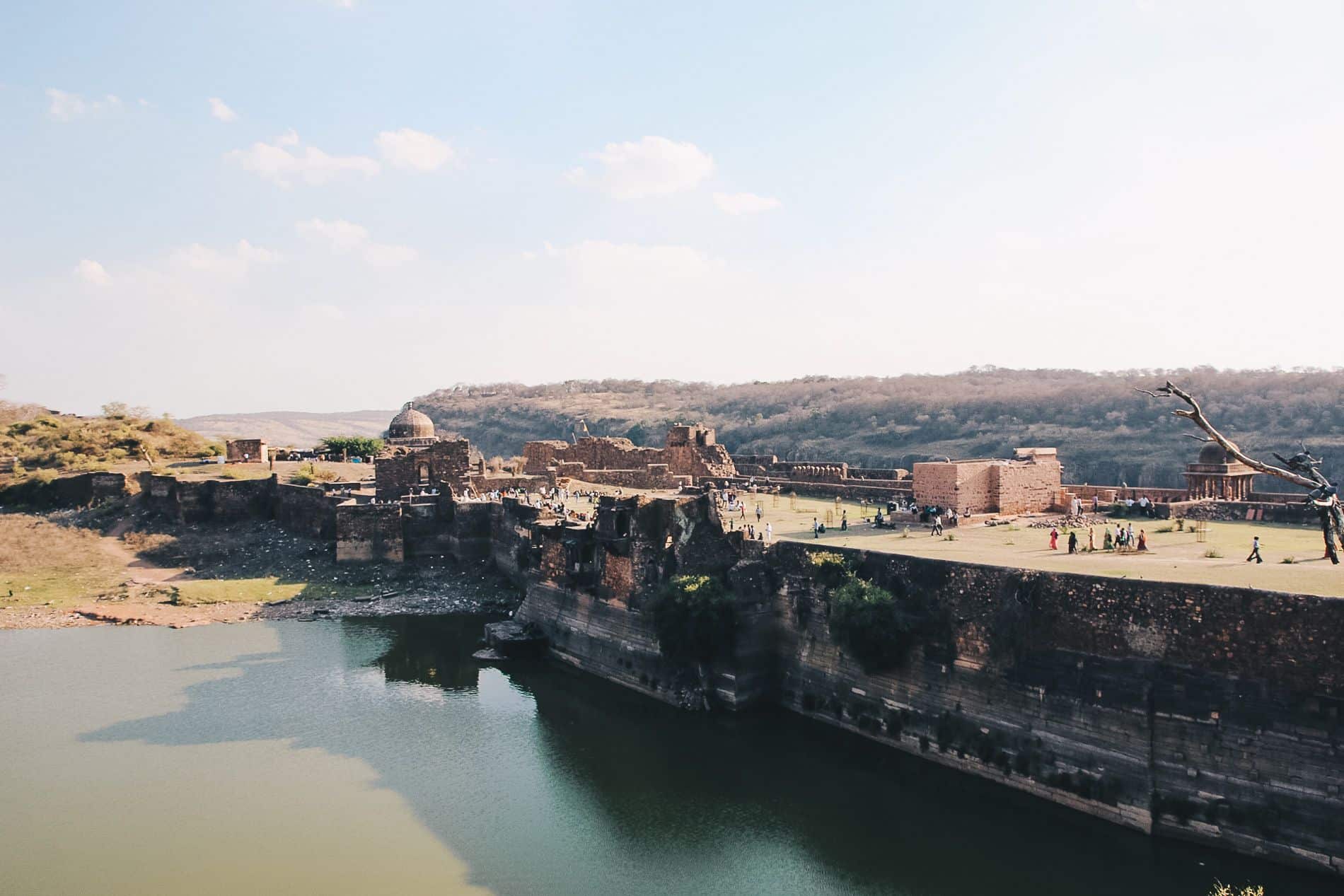
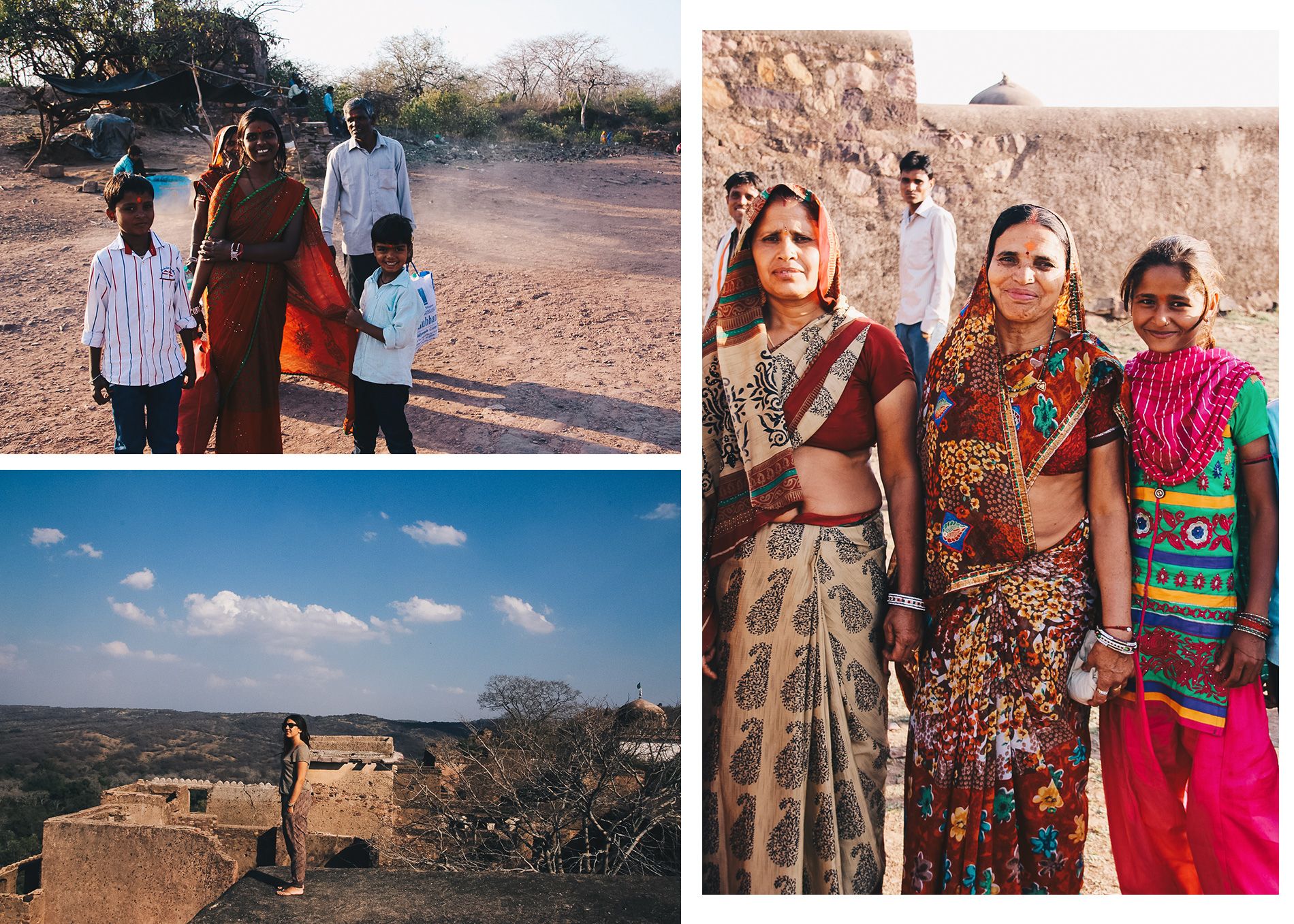
Did you know? In the Wayanad district of Kerala, South India, tigers still roam the mountains. When we were there in March 2015, a news item was making the headlines. A few days earlier, a tiger had devoured a farmer who was walking peacefully in the forest. His head and torso were spared in the attack, and the photos were quite shocking. You can see why he is hounded and disliked in this country.
| RANTHAMBHORE NATIONAL PARK
Ranthambhore National Park covers an area of 1,334 hectares. km2 including 400 km2 open to the public, i.e. only 30% of its surface area. Suffice it to say that you have to be very lucky to see them, but that’s the charm of this safari. However, I have heard it said that safaris are conducted in 8 zones of the park. The best areas to see the Bengal tiger would be in zones 2, 4 and 6. Zone 4 alternates between arid plateaus, subtropical forests, wetlands and savannah.
In 2017, there were around 45 adult tigers and 18 cubs in the Ranthambhore reserve. The number grows slowly but surely every year. When you arrive, you’ll probably be accosted by several agencies. You can choose to go on safari in a 6-person jeep (gypsy) or a 20-person bus (canter). Don’t hesitate to opt for the gypsy, which is smaller, more discreet and easier to handle for tiger spotting!
We arrived in Ranthambhore in the late afternoon and met at the park entrance to start our safari. We were lucky enough to meet a brilliant and experienced guide, who explained all the tigers’ behaviours and habits to us. We realized we were in the company of a tiger tracker, a potential Mowgli with a passion for these animals. He took us to various parts of the park and to one spot in particular, where he had spotted a tiger that very morning! There was a sense of excitement, as the news had quickly spread around town and more cars had gathered at the entrance to the park.
How’s the safari going? You sit in the back of a jeep, driven by a driver and accompanied by a guide. Both are searching for the feline’s footprints and looking for the slightest signal, such as animal sounds. Ranthambhore safari duration: 3h to 3h30.
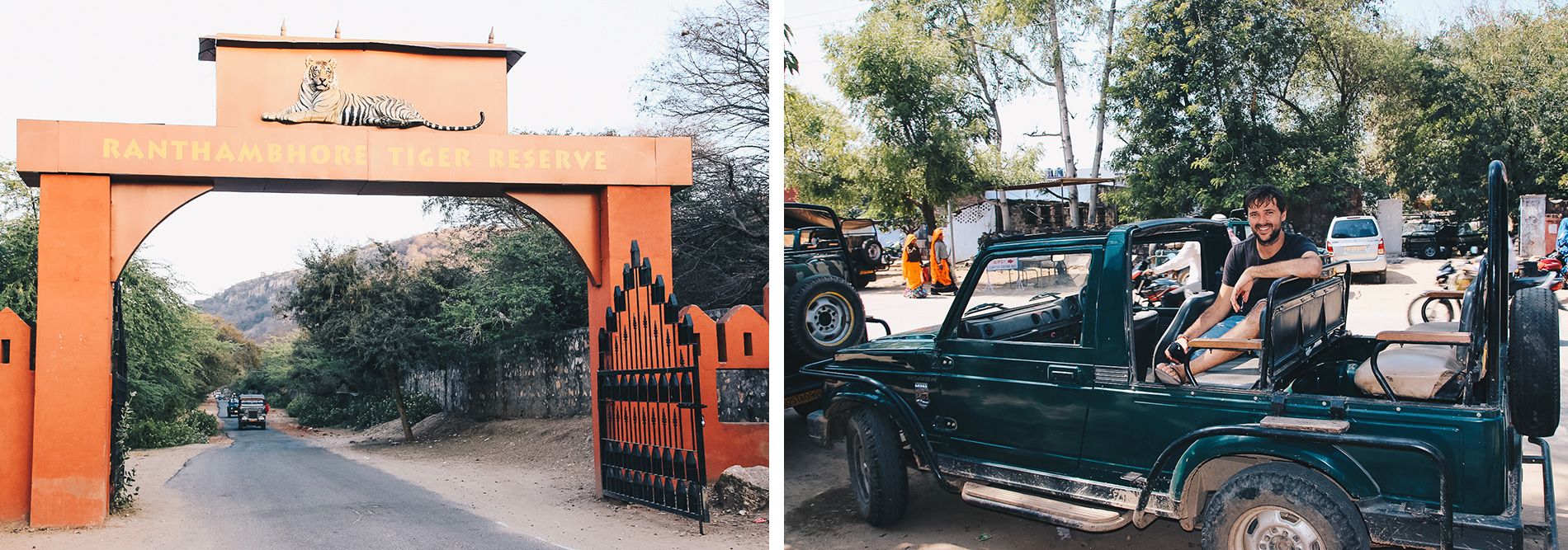
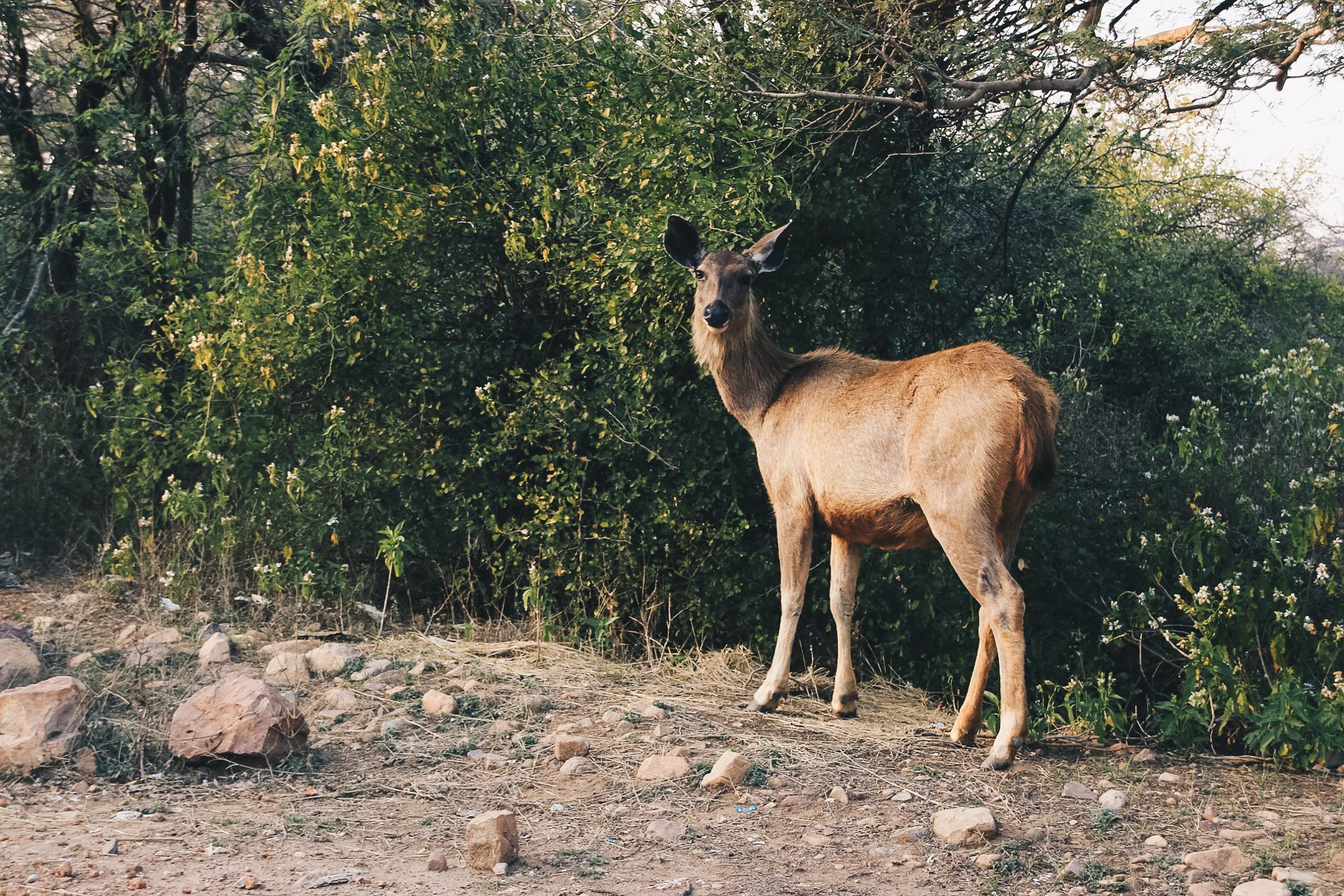
A SUCCESSFUL SAFARI FROM DAY ONE
While all the vehicles in the park were scrambling to find the perfect spot to see the tiger, in the hubbub caused by the Indian tourists, our driver and guide took another option. And bingo, we had the incredible good fortune to see, not the tiger, but a lippu bear also known as a sloth bear, which we tracked for 500 meters. It’s very rare to observe him, he was running at high speed and we had this furtive opportunity.
On the strength of this success, and shortly before the park closed, we headed back to the spot where the tigers had been spotted that morning. Half the vehicles present had left, and there, in the distance, on the hill opposite us, were 2 large tigers. They’re quite shy. One comes up quickly and we don’t have time to get a good look at it, but the second comes down the hill and lounges in front of us. First try and first success. What a joy to be able to see it at last! Our only regret was the hallucinating behavior of the Indians who had also come to observe this animal. In a frenzy of excitement and joy, some of them howled and got out of the vehicle to approach the tiger and photograph it. We were absolutely shocked by this unconscious behavior. As well as scaring away one of the tigers with their screams, these individuals are in no danger.
With the site gate closing 15 minutes later, our driver played with the clock. In rallycross mode, he took us to the park entrance in remarkable style. Sensations guaranteed!
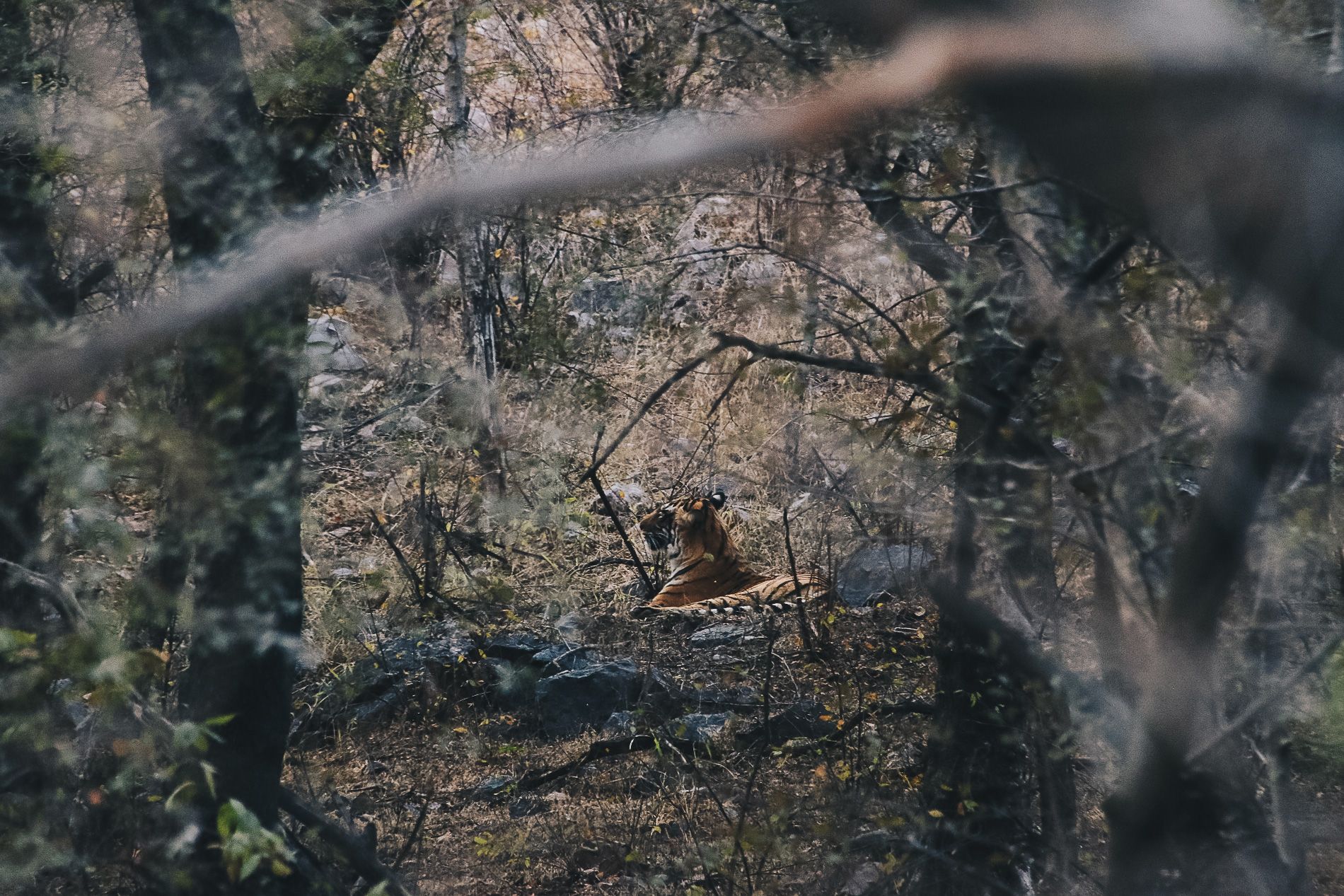
THE NEXT MORNING, SECOND DAY ON SAFARI
On the second day, we get up at 6 a.m. and a 4×4 picks us up at our hotel, heading for the park entrance. Excited by the previous day’s safari, we are gently disappointed during what can only be described as a walk in the park. The driver and even more so the guide (different from the day before) give us absolutely no impression of looking for anything, and despite the fact that we tell them we saw some the evening before at another point in the park, they continue their walk. We were disappointed and 1h25 later, having seen the buffalo on the farm next to the park, we returned to the hotel empty-handed, without having had the feeling of stalking the animal!
Moral of the story, it’s very difficult to see the tiger. It’s also a matter of luck, as with any animal you try to observe in its natural environment. However, in Ranthambhore, it’s also a question of finding the right guide, who is appointed by the park office and run by the Indian government. We met a group of people from Lille who spotted 5 tigers in the park in just 2 hours.
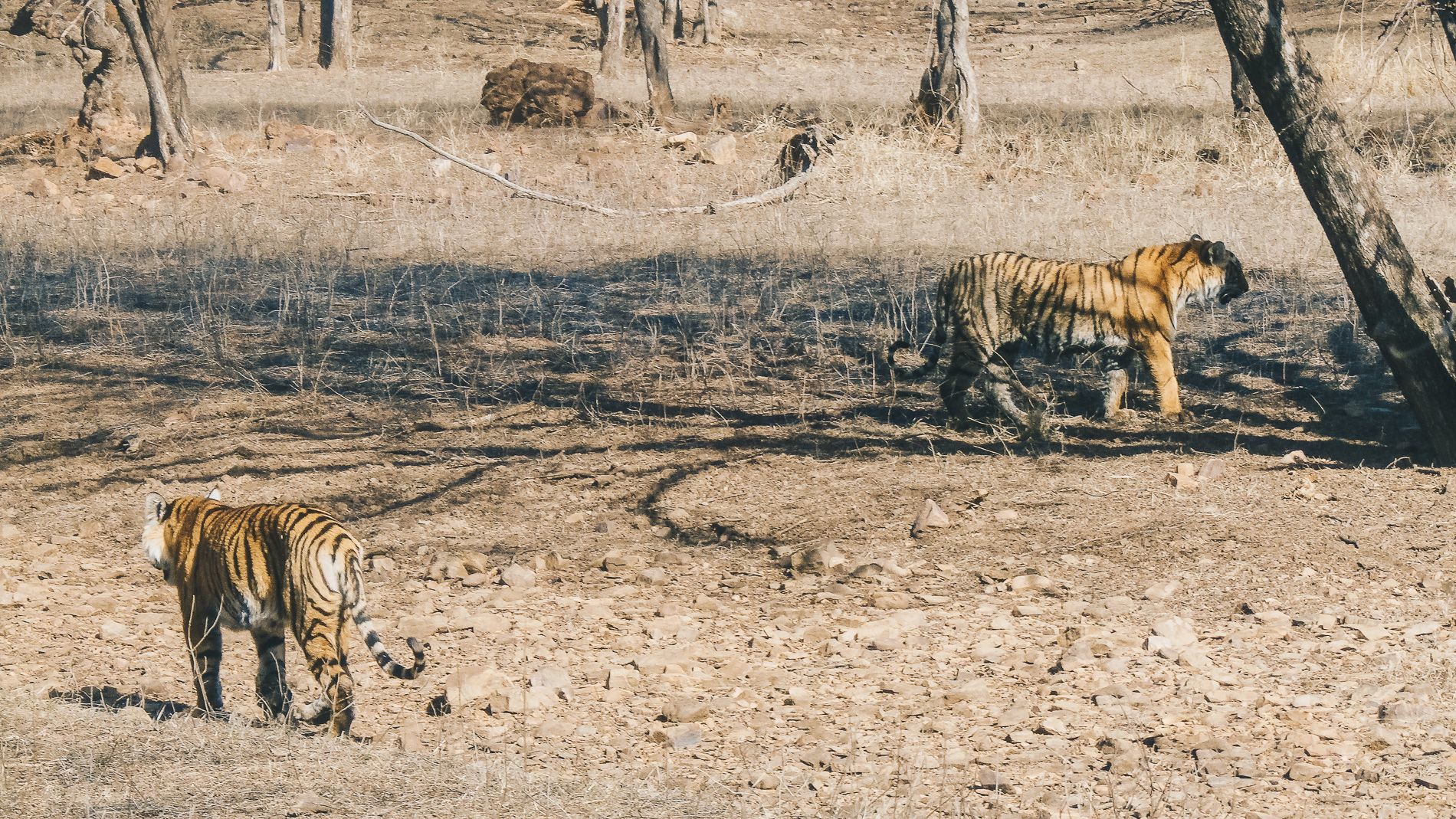

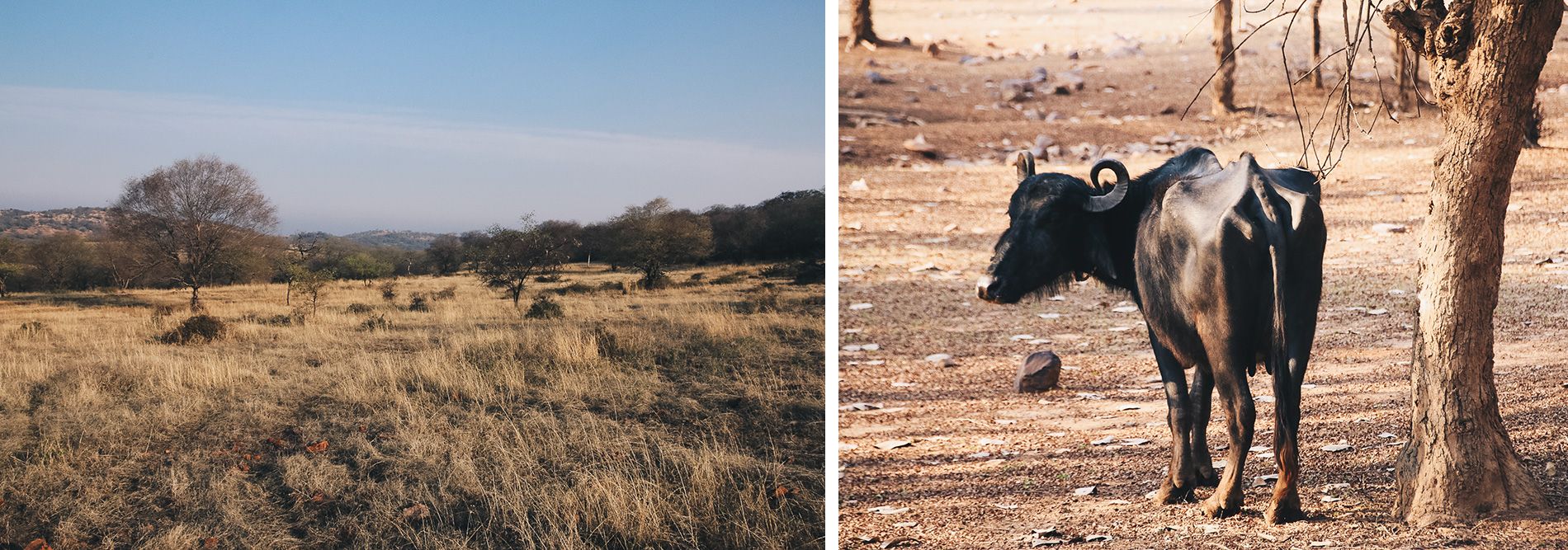
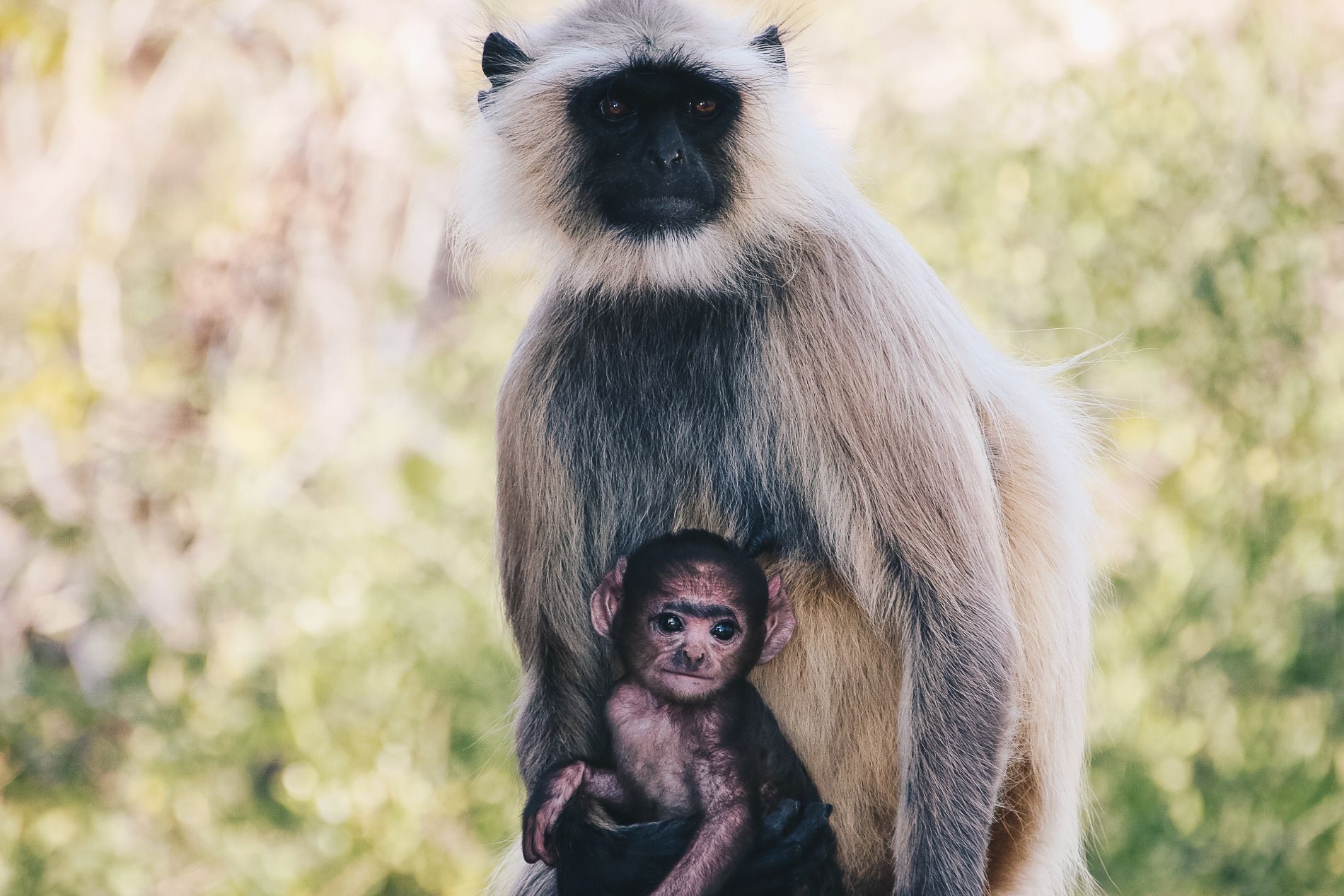
| WHERE TO SLEEP IN RANTHAMBHORE
To prolong the magic of the safari, I recommend staying in a lovely ecolodge in or near Sawai Madhopur.
-
The Oberoi Vanyavilas Wildlife Resort, Ranthambhore: this nature resort is located right next to the national park. It features a spa, outdoor pool, gym, restaurant and 2 bars.
-
Suján Sher Bagh: For a luxurious tent experience, look no further than these chic, well-appointed modern tents with their colonial feel.
- Khem Villas: pretty tents and villas in the middle of the forest for a wilderness experience.
Ranthambore will remain a highlight of our stay, and we recommend you try your luck as the excitement of stalking and the joy of seeing tigers is something to be experienced. Please note that, as an accredited creator of tailor-made trips, I can help you create your own Rajasthan holiday and draw up a personalized itinerary to suit your needs. Please send me an email at : contact@mademoiselle-voyage.fr
Before you leave, don’t forget to read all our other articles on Rajasthan to help you prepare for your trip:
- Our 19-day Rajasthan tour
- Where to celebrate the Holi Festival in India?
- What to bring back as souvenirs from Rajasthan
- Our tips for preparing your trip to India
- Taste a goat’s massala at a local restaurant
- Our opinion and impressions of Rajasthan

